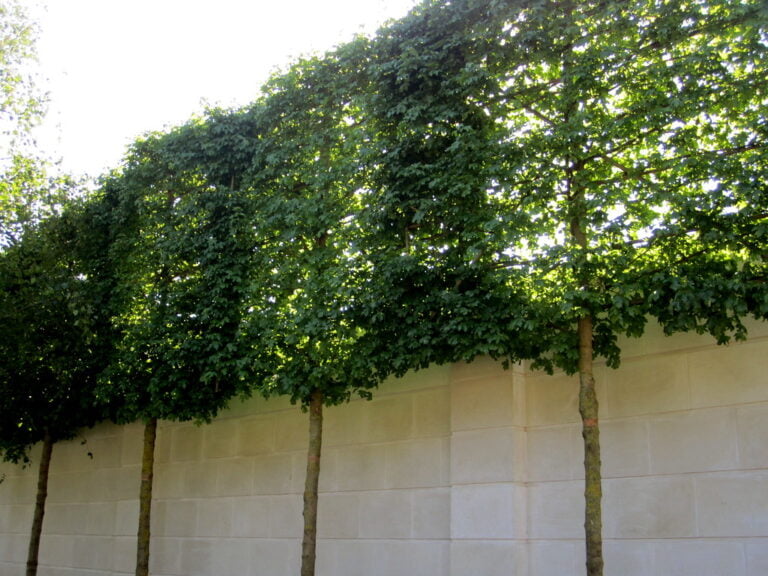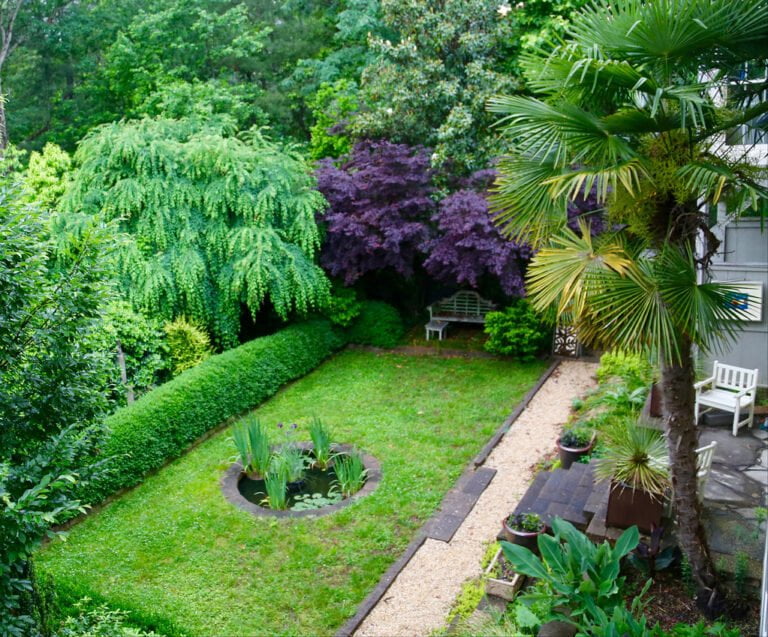Designing Serene and Minimalist Spaces: Elements of Japanese and Zen Gardens
Discover the art of creating tranquil and minimalist spaces with the elements of Japanese and Zen gardens. You'll explore the origins and principles of these timeless designs, as well as the use of water, rock, and plants to achieve harmony. Learn how to incorporate minimalist structures and maintain the serene beauty of these outdoor spaces. Let's embark on a journey to design peaceful and harmonious environments that inspire tranquility and serenity.
Origins of Japanese Garden Design
The origins of Japanese garden design can be traced back to the Asuka period in the 6th century, when the practice of creating peaceful and harmonious outdoor spaces began to emerge. During this time, the principles of simplicity, tranquility, and a deep connection to nature became the foundation of Japanese garden design. The gardens were meticulously crafted to evoke a sense of calm and serenity, offering a refuge from the chaos of everyday life. Every element, from the carefully placed rocks to the raked gravel, was deliberately chosen to create a harmonious and balanced environment. The idea was to serve the visitors, providing them with a peaceful sanctuary where they could find solace and spiritual rejuvenation. This tradition continues to inspire modern designs, embodying the essence of selfless service through the creation of tranquil and minimalist spaces.
Principles of Zen Gardens
To understand the principles of Zen gardens, consider the deliberate placement of elements to evoke a sense of tranquility and harmony. Every element in a Zen garden is purposefully arranged to create a serene and peaceful atmosphere. The principle of Kanso, or simplicity, encourages the use of only essential elements, avoiding clutter and excess. Ma, the principle of space, emphasizes the mindful use of empty space to enhance the overall design and create a sense of openness. Yugen, the concept of subtly profound beauty, encourages the suggestion of hidden depth and mystery within the garden. These principles work together to cultivate a space that promotes calmness and contemplation, allowing visitors to find peace and solace in the simplicity and balance of the garden.
Use of Water in Japanese Gardens
When designing serene and minimalist spaces, the use of water in Japanese gardens plays a crucial role in creating a tranquil and harmonious environment. Water, often represented by a pond, stream, or waterfall, serves as a reflective and calming element. Its gentle flow or stillness adds a sense of peacefulness to the surroundings, inviting you to pause and find solace in its simplicity. The sound of water trickling over rocks or the sight of koi fish gracefully swimming can evoke a sense of harmony and balance within you. The careful placement of water features in Japanese gardens embodies the principle of serving others by providing a space for quiet contemplation and inner peace. It is a reminder to appreciate the beauty in simplicity and find serenity in the present moment.
Elements of Rock and Sand
Consider using a variety of carefully arranged rocks and raked sand to create a sense of harmony and balance in your minimalist Japanese garden. The strategic placement of rocks, known as ishigumi, can represent mountains, islands, or other natural elements. These rocks should be arranged in odd numbers to evoke a sense of asymmetry and natural beauty. Additionally, the raked patterns in the sand, known as karesansui, can symbolize water ripples or flowing rivers, adding a dynamic element to your garden. Use a wooden rake to create smooth, flowing lines in the sand, fostering a tranquil and meditative atmosphere. Remember to keep the overall design simple and uncluttered, allowing the rocks and sand to serve as the focal points of your serene garden space.
Plant Selection and Arrangement
You frequently use an assortment of carefully chosen plants and arrange them in a balanced manner to enhance the tranquility and natural beauty of your minimalist Japanese garden. Embrace the concept of "less is more" by selecting a few key plant varieties that thrive in your garden's specific conditions. Consider incorporating evergreen trees like Japanese maple or pine, along with delicate and graceful ornamental grasses such as fountain grass or mondo grass. These choices not only provide year-round interest but also contribute to the serene atmosphere of your garden. Balance the lush greenery with carefully placed flowering plants like cherry blossoms or hydrangeas to add subtle pops of color. Remember, simplicity is key, so aim for a harmonious coexistence of plant varieties that will bring a sense of calm and balance to your space.
Symbolism in Japanese Garden Design
To truly understand the essence of Japanese garden design, it is essential to appreciate the symbolism embedded in every carefully chosen element. Each aspect of a Japanese garden holds profound meaning, contributing to the overall tranquility and harmony of the space. The placement of rocks represents mountains, while raked gravel symbolizes water. Every bridge, lantern, or plant is intentionally positioned to evoke a sense of balance and peace. The use of moss signifies age and endurance, while carefully pruned trees embody resilience and adaptability. Even the path you walk on has significance, guiding you through a journey of self-reflection and mindfulness. Understanding the symbolism in Japanese garden design allows you to appreciate the interconnectedness of nature and humanity, offering a space for contemplation and inner peace.
Tranquil Pathways and Bridges
How do the tranquil pathways and bridges in Japanese gardens contribute to the overall sense of harmony and balance in the space? In the art of Japanese garden design, pathways and bridges are carefully integrated to create a sense of tranquility and balance. The pathways, often made of natural materials like gravel or stepping stones, guide visitors through the garden in a purposeful and contemplative manner. Bridges, whether simple or ornate, symbolize the journey from the mundane to the spiritual. They encourage mindfulness as one crosses over water or dry landscape features. These elements serve to connect different areas of the garden, leading the visitor on a serene journey through the carefully curated landscape. The gentle curves and minimalistic design of the pathways and bridges contribute to the overall sense of calm and balance, inviting you to experience peace and harmony within the garden.
Incorporating Minimalist Structures
Incorporate minimalist structures into your Japanese or Zen garden to create clean lines and uncluttered spaces that promote tranquility and simplicity. Opt for simple wooden or stone benches, unadorned pergolas, or sleek water features. These structures should blend seamlessly with the natural surroundings, evoking a sense of calm and balance. Consider using bamboo fencing or plain, unobtrusive screens to define boundaries without overwhelming the space. Embrace the concept of "less is more" by strategically placing a few carefully chosen elements, such as a solitary stone lantern or a modest rock garden. Keep in mind that the goal is to enhance the peaceful atmosphere and allow nature to take center stage. By incorporating these minimalist structures, you can cultivate a serene and contemplative environment for yourself and others to enjoy.
Maintenance and Pruning Techniques
When designing a Japanese or Zen garden, it's essential to understand that maintenance and pruning techniques play a crucial role in preserving the tranquility and balance of the space. Regular maintenance, such as raking gravel or sweeping pathways, not only keeps the garden tidy but also fosters a sense of order and calm. When it comes to pruning, simplicity is key. Trim plants and trees with gentle, deliberate cuts, removing only what is necessary to maintain their natural form and encourage healthy growth. This mindful approach to pruning not only promotes the plants' well-being but also contributes to the overall harmony of the garden. By embracing these maintenance and pruning techniques with care and mindfulness, you contribute to the peaceful and serene atmosphere that defines Japanese and Zen gardens.
Creating Harmonious Outdoor Spaces
To create harmonious outdoor spaces in the design of Japanese and Zen gardens, start by balancing natural elements with intentional landscaping to evoke a sense of tranquility and serenity. Incorporate elements like water, rocks, and carefully pruned plants to create a peaceful atmosphere. Use minimalistic design principles to ensure that each element serves a purpose and contributes to the overall sense of harmony. Consider the flow of the space, ensuring that it guides visitors through a contemplative journey. Embrace simplicity in the choice of materials and colors, aiming for a cohesive and calming aesthetic. Remember that every element should work together to create a sense of balance and tranquility. By serving the space with thoughtful design, you can create an outdoor sanctuary that promotes a peaceful state of mind.
Conclusion
Incorporate the principles of Japanese and Zen gardens into your design to create a serene and minimalist outdoor space. Use water, rocks, and plants thoughtfully, and maintain a tranquil atmosphere with minimalistic structures and pathways. By embracing these elements, you can create a harmonious and peaceful environment that promotes relaxation and mindfulness. Embrace simplicity and balance in your design to cultivate a serene and peaceful outdoor space.






